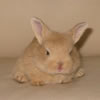
About 3 weeks ago I finally got a copy of Sally Pointer's The Artifice of Beauty. I'd been putting it off because I'd been broke since it came out. Well... I'm in love. After the first 20 pages, I wanted to give up teaching in the SCA and just save up to hand out copies of it. I am planning to buy a copy as a twelfth night present for Carowyn, because I think that's the best way to promulgate the info that's in it. (If you don't know Carowyn Silveroak, she is a broadcast medium. The Labrador Retriever of the Arts World. I'm telling you.) After I'd gotten through the medieval information, I decided that there was still work out there that I could do in the area. But I continue to grovel in awe.
However, this book hadn't been reviewed on Amazon yet. And I need to post reviews on my mailing lists, too. [Yes, I'm a librarian geek. I've not had an account on Amazon for years, not since the privacy scandals in the mid 90s. And you can't post a review with a new account unless you buy something. So I've bought my brother's Christmas presents from Amazon -- so I could post a review.] Now, I just need to write up the review. Here's my first stabs at it.
Sally Pointer. The Artifice of Beauty: A History and Practical Guide to Perfumes and Cosmetics. Sutton Publishing, 2005.
While there are many books out on cosmetics, perfumes, and the history of adornment, there has been a dearth of well-researched, modern historical and archaeological studies with practical information. Sally Pointer, from the National Museum and Gallery of Wales, has written a text that fills that gap admirably. The depth and accuracy of the research, and the scholarly discussion, in The Artifice of Beauty, is combined with the re-creation experiences of a skilled museum curator. Anyone interested in researching and/or recreating fashion, material culture, or personal life in history should have this book in her or his library. Those interested in dabbling in homemade cosmetics and perfumes will also find it very useful.
Pointer first lays out "The Nature of the Evidence" in her introduction, then tackles the various ages of humankind in nine chronological chapters. While none is completely exhaustive-- the beauty regimens of the nineteenth century alone have filled multiple shelves of books-- each chapter provides a good groundwork for understanding cosmetics, perfumes, and ideas of beauty in the period. Her strongest suit is in the early evidence, Ancient World and Classical world sections, but those areas have previously been the subject of much archaeology but little reliable summary. Her information about the medieval through the seventeenth centuries is a treasure trove of facts and quotations.
Of special interest is Pointer's analyses of possible make-up trends based on pictoral representations of people in the period. Were pink cheeks admired? Highly accented eyes? What color of hair was in fashion. Information about hairpieces and false hair, washes, soap and other cosmetic preparations are also included. Sidebars cover specific items that Pointer herself has researched and recreated, such as a nail stain made from alkanet root, Roman wigs, Mesopotamian eye paints, alcohol-based Hungary Water, seventeenth century 'invisible rouge,' 18th century Carmelite water. Illustrations of advertisements highlight the later chapters. The text here is interesting as well as erudite, and Pointer carefully delineates her deductions and suppositions so that the reader can tell what is documented fact and what scholarly reasoning. Throughout, attention is paid to the safety of the ingredients discussed, and the possible and documented health effects on their users. Some facts-- such as a strange fashion in the nineteenth century for nipple-piercing and a selection of medieval mouthwashes-- will surprise the reader. Others, such as the utility of pomade for the hair, that the skin-destroying properties of ceruse (white lead) were known to the historic critics of 'painting', or that bathing and washing were done with some regularity in pre-modern periods, may explode some cherished myths.
After the text history, Pointer lays out "A Guide to Recreating Perfumes and Cosmetics, with Selected Recipes Adapted for Modern Use." The second section of the book is of interest not only to historians and re-enactors but to chemists, in that it consists of a glossary of cosmetic and perfume ingredients. While not exhaustive, especially with reference to more modern ingredients, this guide will be invaluable to those curious about Behen oil, Kohl, the elusive Nard, pomades, stacte, terebinth resin, etc. Here, also, are included a number of excellent recreated or redacted recipes. The next section covers Tools, Implements and Cosmetic Containers, with special attention to the pre-modern period.
One cannot overemphasize the importance of chapter 12, on Adapting Early Recipes to Modern Usage, for the recreator, re-enactor, or cosmetics student or dabbler. In this section Pointer lays out two historical recipes, one classical and one Victorian, and shows how she worked out safe, modern recipes for the items described. (For SCA purposes, these two recipes would be excellent guides for creating competitive documentation.) The painstaking work here, and the careful explanation of what changes and compromises the author felt necessary, are outstanding. This is supplemented by a table of Modern Cosmetic Pigments to assist the re-creator, a listing of Weights and Measures, as well as an Appendix listing ingredients mentioned by Classical Authors (compare to Forbes' Studies in Ancient Technology volume 3) and "Abdeker's Library of the Toilet, 1754." The index, notes and bibliography are easy to read and useful.
I highly recommend this text for personal and library collections. Libraries with an interest in personal care, women's history, cosmetic chemistry, fashion, pre-modern culture, hobby herbalism, and historic costume and medieval culture will find this an especially helpful introduction.